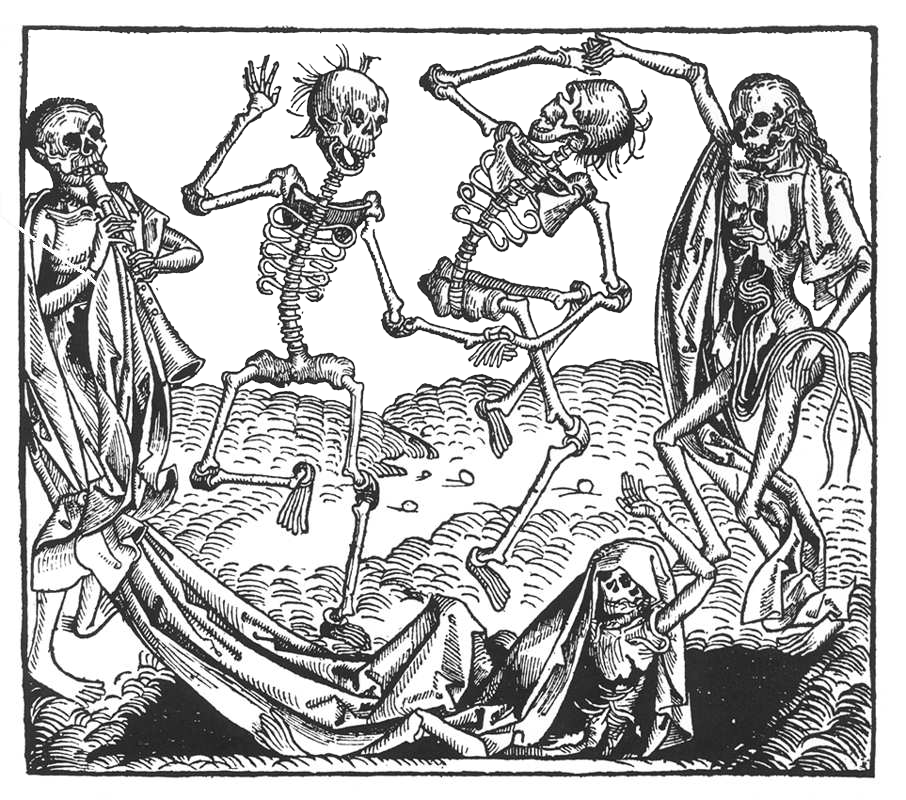Forensic Case Files: The Black Death Revisited
/We're thrilled here at Skeleton Keys to be named as one of the “Forensic Science 2.0 - Top 100 Websites to Bookmark”. ForensicScienceDegree.org has compiled a list of 100 forensic sites that each adds its own perspective to the field of forensics. We're thrilled to be included as #70 in this unranked list!
And now, on with this week’s post!
 The Black Death devastated Europe in the mid-14th century when it wiped out more than 50 million people, over half the population of the time. It forever changed the face of monarchies, politics, commercial trade, and society.
The Black Death devastated Europe in the mid-14th century when it wiped out more than 50 million people, over half the population of the time. It forever changed the face of monarchies, politics, commercial trade, and society.
But what caused this catastrophic disease? The long standing popular belief has been that it was the bubonic plague, caused by the bacteria Yersinia pestis (Y. pestis). One researcher claimed to have proof of the pathogen, but, for many years, no one was able to confirm these results. As a result, only anecdotal evidence supported the bubonic plague theory, and since many gravesites have been lost to time, there were no definitive remains to test.
Last year, we covered the discovery of Black Plague victims in London. At the time, we wrote that researchers at the Museum of London planned to extract tooth pulp from some of the Black Death victims in an attempt to sequence the genome of the fatal pathogen. As the plague pathogen only infects the soft tissues of the body, the dehydrated internal soft pulp of the teeth and any residual blood therein, protected over the centuries by calcified dentin and enamel, would be the only remaining soft tissue associated with the remains; the rest of the skin and muscle would have long since decomposed. It was these remains, as well as remains recovered from a burial ground in East Smithfield, originally located just outside of London’s walls, that would be used for testing.
Just this past week, I learned that one of the researchers involved in this project is a professor at my own workplace. Hendrik Poinar, an evolutionary biologist and the head of McMaster University’s Ancient DNA Centre, used his expertise dealing with ancient samples to assist the researchers at the University of London with their tooth samples. The Poinar lab notably recovered and sequenced DNA from wooly mammoths over 10,000 years old, so they had high hopes for only 700-year-old bacterial DNA.
 The teeth were shipped to McMaster and members of the Poinar lab extracted DNA from the ancient tooth pulp. Amazingly, they found sequences that matched the DNA of modern Y. pestis. For the first time, science had definitive proof of the presence of Y. pestis in a Black Death victim.
The teeth were shipped to McMaster and members of the Poinar lab extracted DNA from the ancient tooth pulp. Amazingly, they found sequences that matched the DNA of modern Y. pestis. For the first time, science had definitive proof of the presence of Y. pestis in a Black Death victim.
Not content with mere confirmation, the team set out to reconstruct the entire Y. pestis genome. This wasn’t simply a scientific exercise. They were on the trail of a pathogen that annihilated half the population of Europe, something that the modern strain would be unable to do. Modern bubonic plague can be fatal, but if it is caught within the first two days, it is very treatable with something as basic as tetracycline, an early antibiotic in use since 1948. Also, modern plague is not easily transmissible between humans, whereas the Black Death of the 1340s spread like wild fire through the human population. So what were the differences between the ancient and modern strains?
With the help of Dr. Johannes Krause of the University of Tűbingen and using the modern Y. pestis genome as a template, they reconstructed the entire ancient genome. When the two strains were compared, they found 97 differences between them. Work is ongoing to determine how these changes could account for the variance in pathogenicity and spread.
Some alternate theories to explain the differences between the strains have also been proposed. In a second study where Italian remains were examined, genetic remnants of Clostridium tetani, the bacteria that causes tetanus, were found along with the plague pathogen. This raises the question that the rapid spread of the 14th-Century might be related to a co-infection of Y. pestis with another pathogen.
Another question raised from these studies, considering the huge death toll, is what conveyed protection to the 50% of the population that survived? Was it lucky avoidance, or was there a genetic component that allowed the survival of so many? If so, it would be interesting to compare the remains of plague victims versus survivors. Such results could have significant implications on modern plagues like HIV and small pox—and, as such, certainly deserve additional studies of their own.
LATE BREAKING NEWS! As I readied this post for publication, a breaking news story was brought to my attention. In recent experiments with 6th-century victim remains from the Plague of Justinian, Dr. Poinar identified that a separate but equally devastating strain of Y. pestis was responsible for that plague. In 541 A.D., the Plague of Justinian swept through Asia, Northern Africa, the Middle East and Europe, killing an estimated 30 – 50 million people. But the two plagues, separated by over 800 years, share the same type of pathogen as their cause. In creating the oldest known genome for Y. pestis, this team of scientists will now be able to compare Dark Age to Renaissance samples in an effort to discern the intricacies of their killing power. Only through study of these fatal pathogens will scientists discover how to avoid a similar catastrophe.
Photo credit: bionicteaching and Wikimedia Commons



 54.7%
54.7%